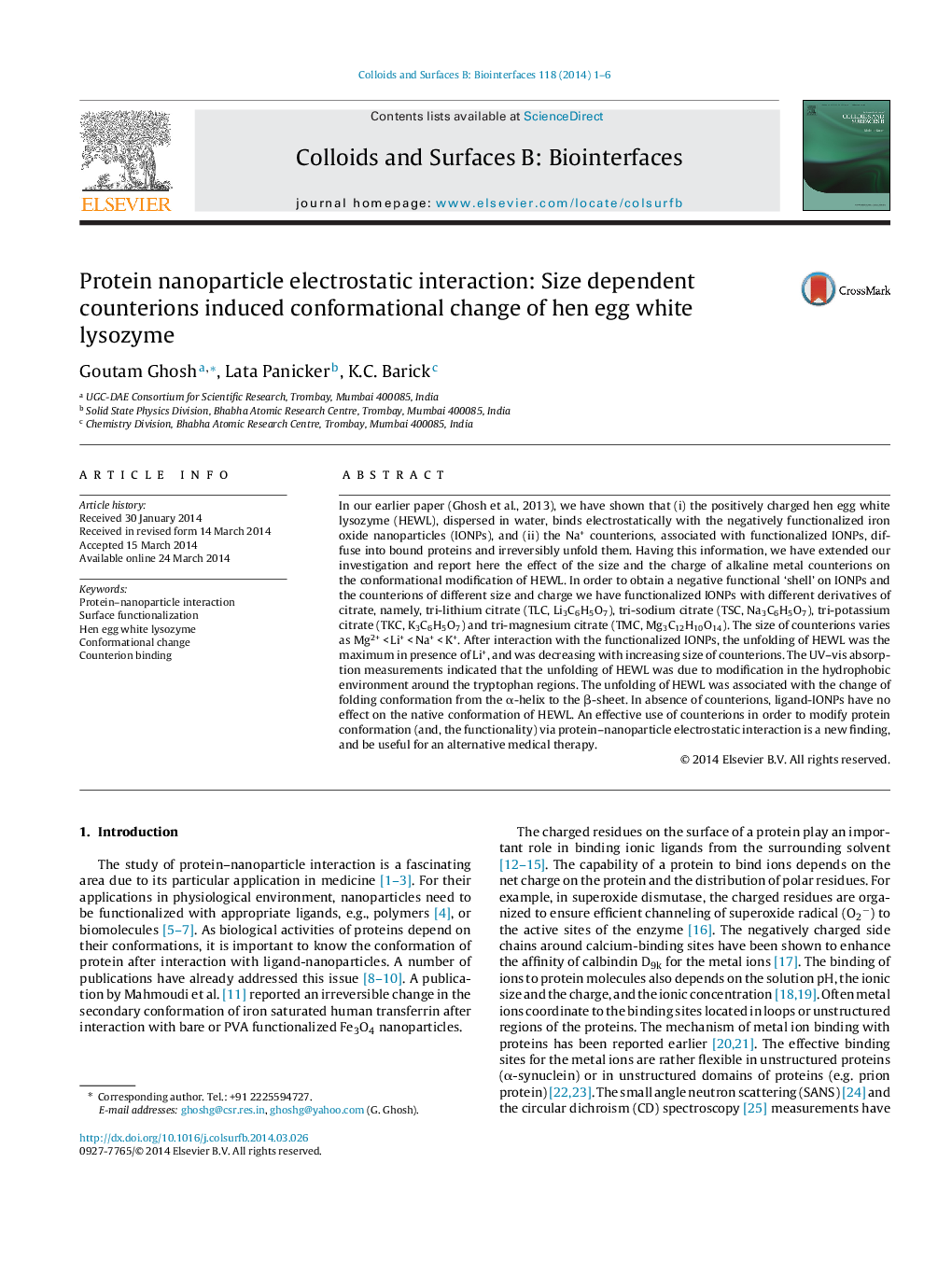| Article ID | Journal | Published Year | Pages | File Type |
|---|---|---|---|---|
| 599661 | Colloids and Surfaces B: Biointerfaces | 2014 | 6 Pages |
•Reported the application of our model of electrostatic interaction between the positively charged HEWL and the negatively charged ligand-IONPs.•Reported the effect of the size and charge of metal counterions of ligand-IONPs on the secondary conformation of HEWL.•Analyzed the possible binding sites of metal counterions to protein amino acid residues.•Analyzed the possible mechanism of conformational change of HEWL due to metal counterions binding.
In our earlier paper (Ghosh et al., 2013), we have shown that (i) the positively charged hen egg white lysozyme (HEWL), dispersed in water, binds electrostatically with the negatively functionalized iron oxide nanoparticles (IONPs), and (ii) the Na+ counterions, associated with functionalized IONPs, diffuse into bound proteins and irreversibly unfold them. Having this information, we have extended our investigation and report here the effect of the size and the charge of alkaline metal counterions on the conformational modification of HEWL. In order to obtain a negative functional ‘shell’ on IONPs and the counterions of different size and charge we have functionalized IONPs with different derivatives of citrate, namely, tri-lithium citrate (TLC, Li3C6H5O7), tri-sodium citrate (TSC, Na3C6H5O7), tri-potassium citrate (TKC, K3C6H5O7) and tri-magnesium citrate (TMC, Mg3C12H10O14). The size of counterions varies as Mg2+ < Li+ < Na+ < K+. After interaction with the functionalized IONPs, the unfolding of HEWL was the maximum in presence of Li+, and was decreasing with increasing size of counterions. The UV–vis absorption measurements indicated that the unfolding of HEWL was due to modification in the hydrophobic environment around the tryptophan regions. The unfolding of HEWL was associated with the change of folding conformation from the α-helix to the β-sheet. In absence of counterions, ligand-IONPs have no effect on the native conformation of HEWL. An effective use of counterions in order to modify protein conformation (and, the functionality) via protein–nanoparticle electrostatic interaction is a new finding, and be useful for an alternative medical therapy.
Graphical abstractFigure optionsDownload full-size imageDownload as PowerPoint slide
